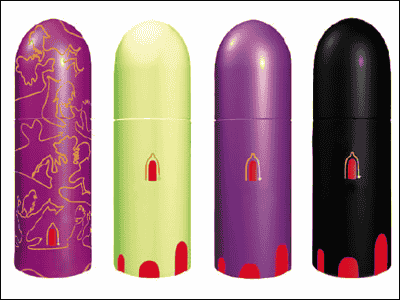Graphene sheet turned out to be effective because it is not bitten by mosquitoes

by
Graphene is a sheet-like substance with a hexagonal lattice structure of carbon atoms, and is expected to be usable for electronic devices and solar cells. A research team at Brown University discovered that using such a sheet of graphene to prevent clothes from being stabbed by mosquitoes.
Mosquito bite prevention through graphene barrier layers | PNAS
https://www.pnas.org/content/early/2019/08/20/1906612116
Mosquito incognito: Could graphene-lined clothing prevent mosquito bites? | Brown University
https://www.brown.edu/news/2019-08-26/moquitoes
“The mosquito is a disease-borne animal around the world, and there is great interest in how to avoid mosquito bites without the use of chemicals,” says Robert Hart , an engineering professor at Brown University. Says. Hart and colleagues were researching how to protect themselves from harmful chemicals by folding graphene into the fabric of clothes, but eventually 'Isn't it possible to prevent mosquito bites with graphene?' ”And he started a new experiment.
The research team made a hypothesis that “the strong structure of graphene protects the skin from the mosquito needles” and collected subjects who said “you can be bitten by mosquitoes”. Participants exposed only a part of their skin, 'bare skin', 'a state of covering the exposed part with a bleached cotton cloth', 'a state of covering a further ultrathin graphene oxide (GO) sheet from above the cotton cloth' Three patterns were placed in cases with mosquitoes bred in the laboratory.
At the end of the experiment, I checked how much the participants' arms were stabbed by mosquitoes, while the exposed skin and the skin covered with cotton cloth were stabbed a lot by mosquitoes, whereas the arm covered with a graphene oxide sheet once Even mosquito bites were not bitten. However, as a more surprising phenomenon, the research team has pointed out that 'when the graphene oxide sheet was used to cover the arm, mosquitoes did not stop on the sheet in the first place.'

by
Enrolled in a doctoral program at Brown University, he is the main author of the paper Cintia Castillho said, in the state of there 'graphene oxide sheets, mosquito did not even land on the arm of the patch. Mosquitoes came in at all to the case “We didn't care about our arms.” “We thought of graphene oxide as a physical barrier to mosquitoes, but looking at the results of the experiment, graphene oxide is a chemical that prevents mosquitoes from sensing the presence of the target. I began to think that it would function as a barrier. ”
The research team then applied human sweat on the outside of the graphene oxide sheet to reinforce that the graphene oxide functions as a chemical barrier, and again put the arm into the mosquito case. Then, mosquitoes seemed to have landed on their arms and stabbed like they did when covered with bare skin or cotton cloth. From this, it is speculated that graphene oxide prevents chemical substances that attract mosquitoes from leaking to the outside and functions as a chemical barrier against mosquitoes.
In addition, it seems that the graphene oxide sheet works as a physical barrier against the mosquito needle only when the sheet is dry, and if the graphene oxide sheet is wet, the mosquito can bite pattern. If reduced graphene oxide (rGO) with reduced oxygen content is used, it will not pass through mosquito needles even when wet, but it will lack breathability when used as clothing. Therefore, the research team aims to make graphene oxide more stable and prevent mosquito needles from penetrating even when wet.
“It is desirable to find a way to mechanically stabilize graphene oxide and keep it strong as a physical barrier even when wet,” said Hart. This new step is bitten by mosquitoes while maintaining breathability. It gives you the full benefit of not having it. ' The research team stated that a properly designed graphene oxide sheet could be used on the lining of the garment to create clothing that would protect against mosquitoes.

Related Posts:







